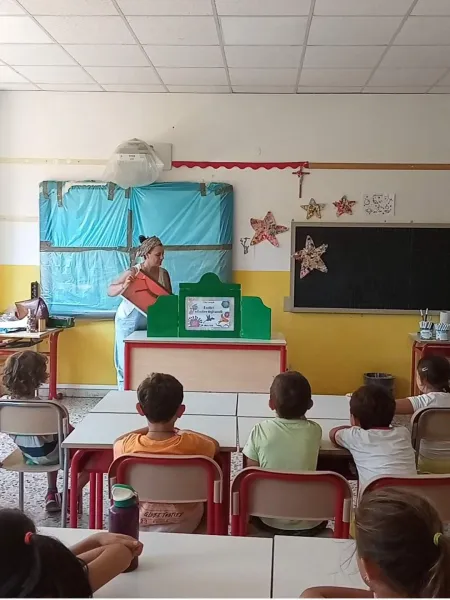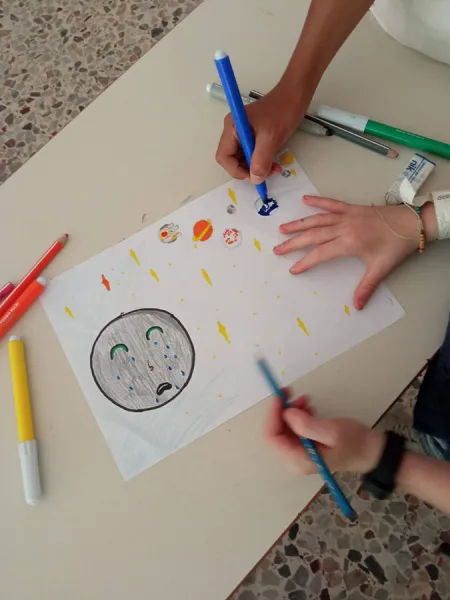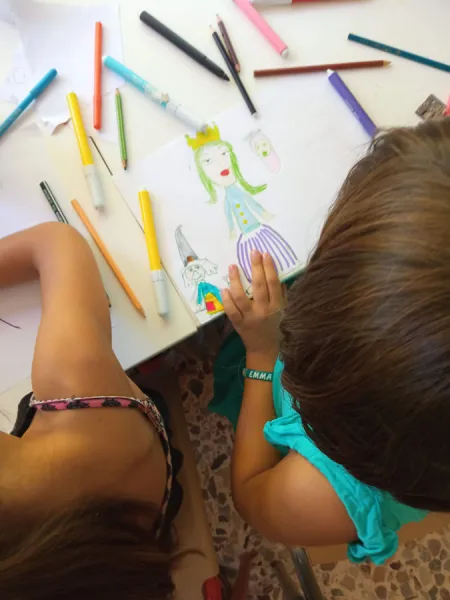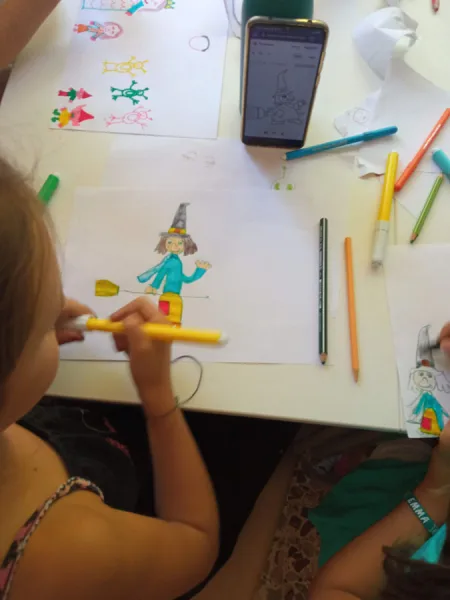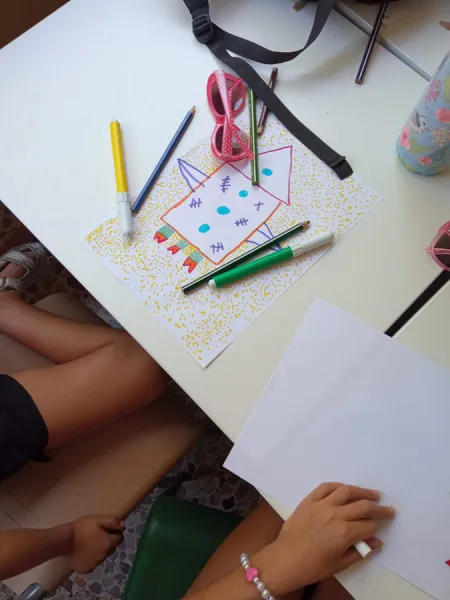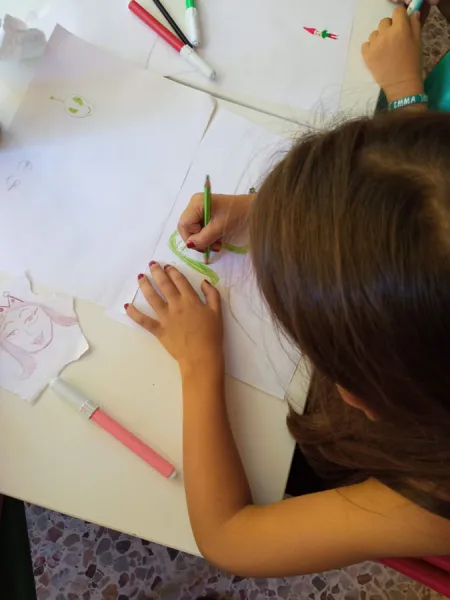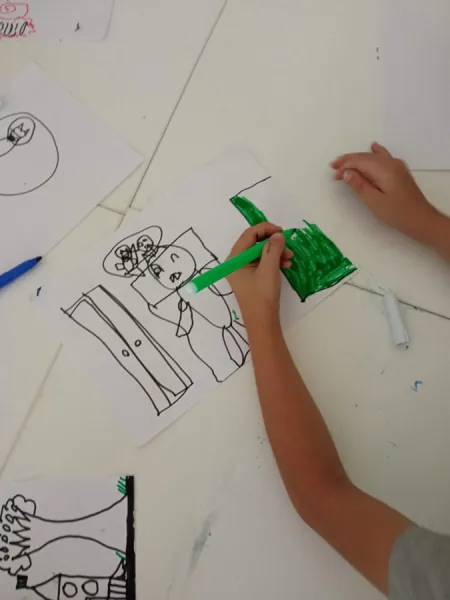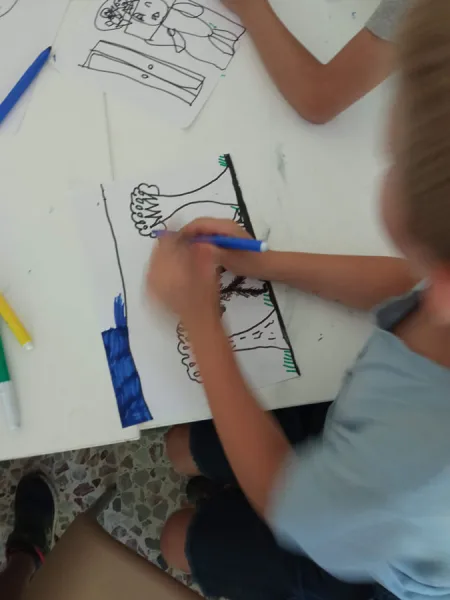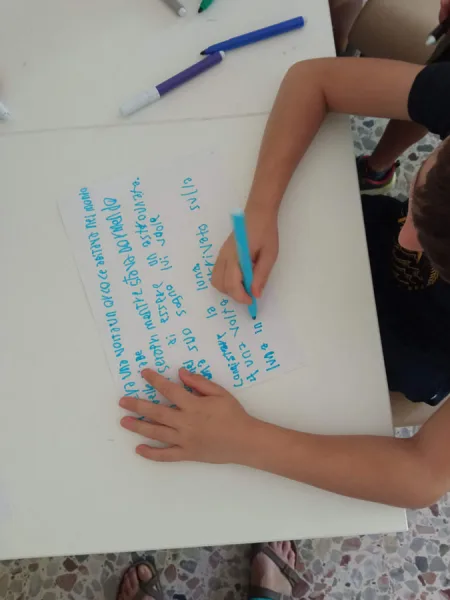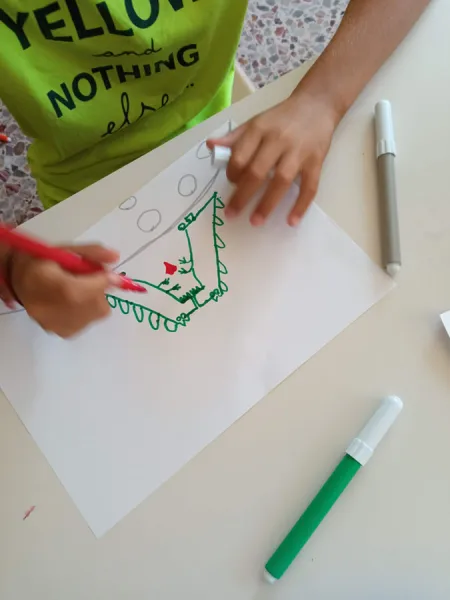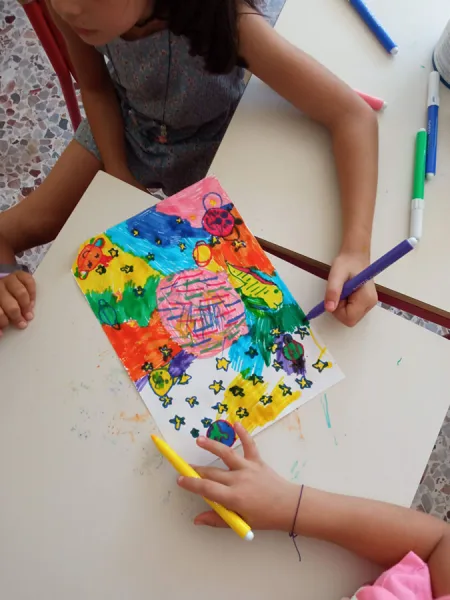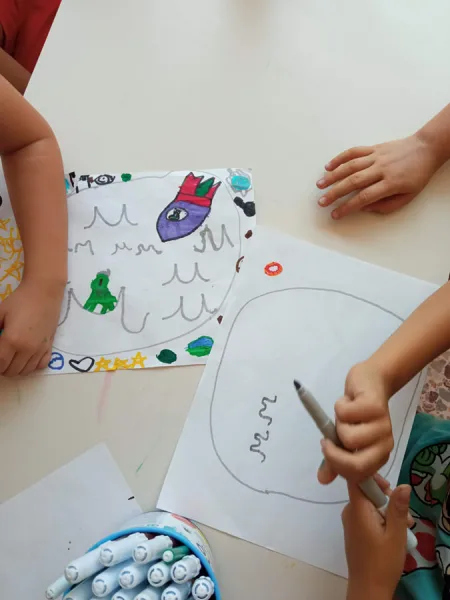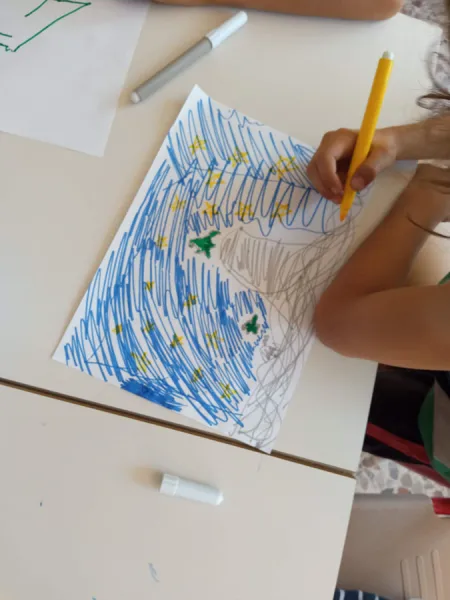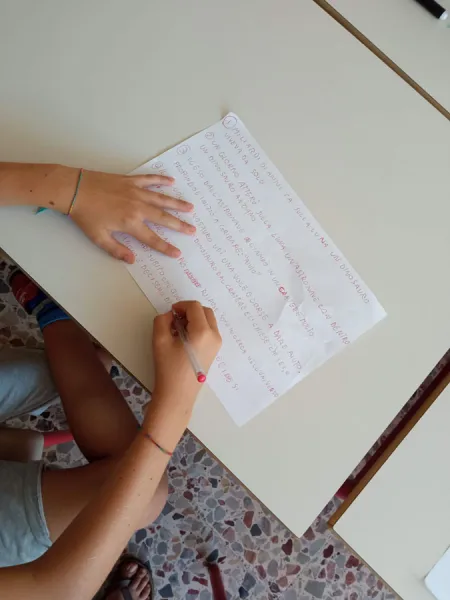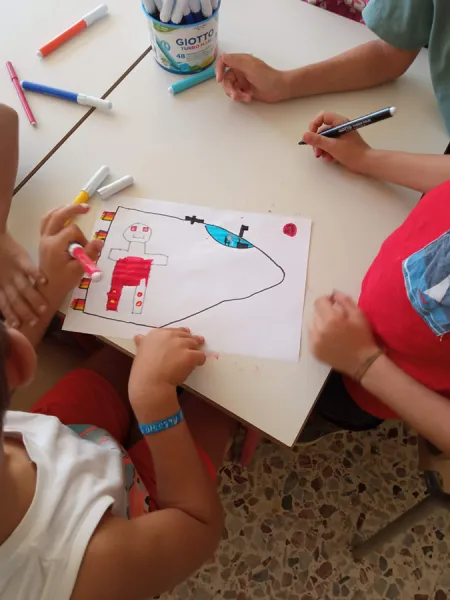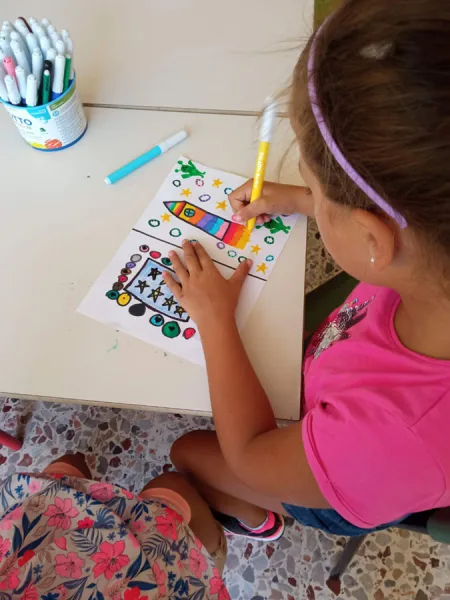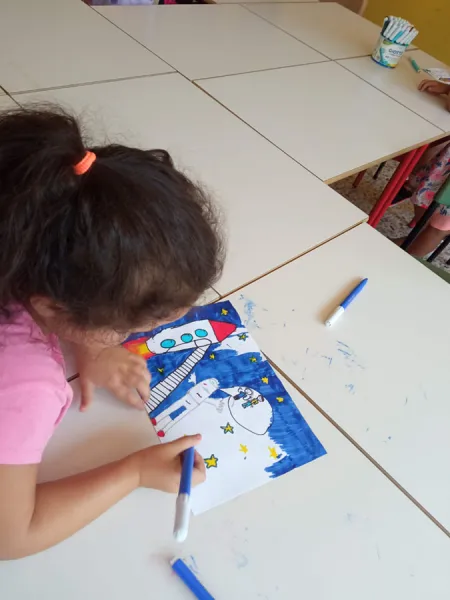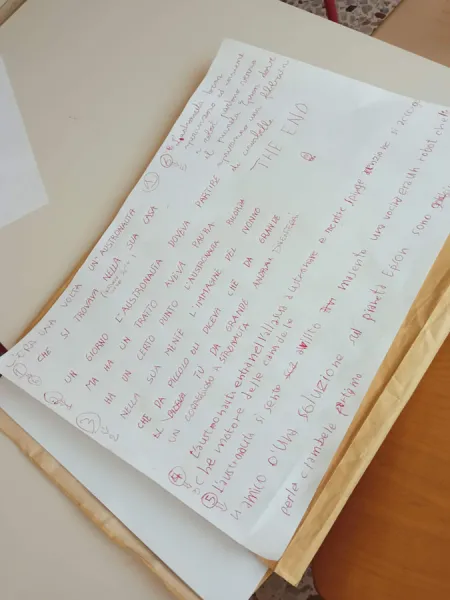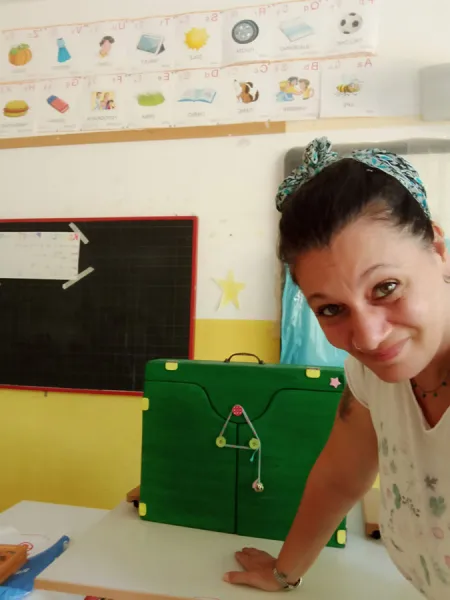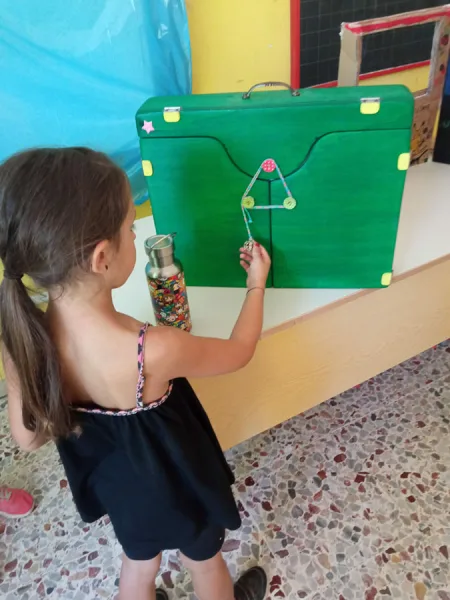Kamishibai 2
«The fairy tale must be fulfilled and perfect» (Aristotle)
In this type of laboratory unlike the previous one () I involve children in an active role in the creation of a story.
I am inspired by the methodology that today is indicated with the expression tezukuri (handmade) kamishibai, stories created by students to pursue the type of teaching that in the first half of the twentieth century developed in Japan starting from the initiative of a student of the Department of Education of the University of Tokyo, Matsunaga Kenya.
He came in contact with kamishibai and instantly recognized its potential in school contexts. With his story “The School of Life” (Jinsei no annai) he started this new approach to the instrument of kamishibai.
Teaching
The goal of this workshop is to playfully bring children to some reflections on the world of fairy tale and storytelling in general. What does the protagonist mean? Who are the characters-type? What are the common elements among fairy tales?
This activity aims, on the one hand, to discover and acquire in the most natural way the concepts described in Propp’s Morphology of the fairy tale, on the other, to familiarize yourself with space and narrative time.
The approach necessarily takes into account the age of the participants and adapts the level of study and research of the principles mentioned to the class in which it is held.
In terms of skills the laboratory aims to develop:
- clarity of presentation
- ability to refine with originality
- compliance with the timetable
- capacity to work in groups and contribute actively to the achievement of the result
Pedagogy
For kindergarten class, the great pedagogical objective of this activity is the education of listening.
Like any representation, the kamishibai has in itself the ritual of waiting for “the beginning of the show”. This keeps the attention high, concentrating on the suggestion of the story read aloud and on the garish and evocative illustrations.
From primary school onwards, with different degrees of development, the goal is to make children aware of their strengths and weaknesses and how important and profitable collaboration is within a group dynamic. In this sense it is the ideal setting to promote a multifaceted vision of skills, in line with what Gardner called multiple intelligences.
Remaining also faithful to the playful and spontaneous intention of kamishibai, this laboratory avoids any temptation “scholastic” in the sense of cuteness and imposed of the term. It is the creative aspect, the putting into play, the emotional involvement and the group work (understood horizontally) to keep alive the interest and enthusiasm of children and young people, attracting them, through fairy tales and stories, towards the exploration of new concepts and tools.
The development described below is only a survey of possible developments in this type of laboratory. Each experience makes history itself, adapts and evolves on the basis of each individual context.
Performance
The workshop is divided into four phases.
1) The premise
The children are offered the vision of a short kamishibai show in which a short story is told without the ending.
2) The ending
In this phase the children will invent together a development to the story by composing the narrative captions, that is the words necessary to describe the drawings that will illustrate the end of the story.
3) The drawings
Once established the narrative plot we will proceed to the realization of the illustrations. Children, divided into small groups (depending on the number of participants) will make the necessary boards, using the technique of collage, oil pastel, marker and pencils. Once the tables have been completed, we will glue the narrative captions on the back of each drawing, preparing for the complete reading of the story.
4) The whole story
The children will attend the reading of the complete story, with a final written and illustrated by them!
Quick Info
| Addressed to: |
|
|---|---|
| Age range: | 5-13 years |
| N° partecipants: | Max 20 kids |
| Duration: | 2.5 hours |
| Required material: | Sheets (preferably A3), colours |
| Place: | Outdoor or indoor |
| Price: | NA |
| Notes: |
